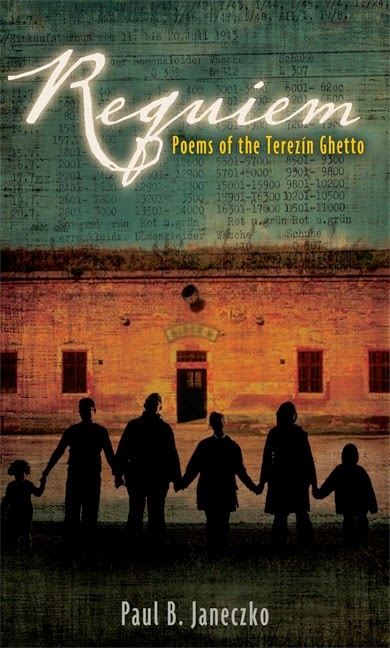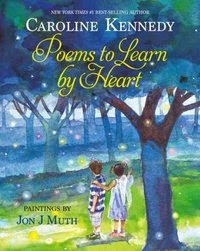 |
| Cover image: www.mcmillian.com |
Our story begins in 1911, as the "Ch'ing dynasty collapsed," sending China into political and social chaos (Yang 1). Four spirits -- the Dragon, Tortoise, Pheonix, and Tiger -- meet to decide what to do, for their very survival rests with the fate of China. The Dragon, Phoenix, and Tiger argue about what their best change for survival might be, while the Turtle remains silent. He later boards a ship headed to the West, where he meets a young man, and strikes a mysterious deal with him.
The narration shifts to his mother's tale and how she came to America as a little girl, where she believed life would be like the movies she saw. Suffice to say, reality did not match her fantasies. It was much, much worse, and quite tedious. She ended up married to a grocer and had a son named Hank, our narrator.
Hank feels like he's had a fantastic childhood, learning to help his father run the grocery store and play mahjong with his father's friends.. Hank's mother doesn't feel the same way. She wants Hank to become a superhero after a chance encounter with the Anchor of Justice. She proceeds to make him a costume, then search for a way to imbue Hank with superpowers, by any means necessary (and I do mean any means necessary). She subjects him to toxic waste, herbal infusions, bites from animals used for science research, and so on. All that leads to nothing more than Hank becoming ill from the toxic sludge and his skin tuns a shocking shade of pink when it gets wet. Next, his mother takes him to a family friend (Uncle Wun Too) to teach him kung fu. When Uncle Wun Too deems Hank is ready to fight, Hank's mother takes him for a ride through Chinatown in search a crime in progress so Hank can save the day.
It doesn't go well. Hank is beaten badly, and saved in the process by the the young lady he meant to save.
While Hank recovers from his injuries, he finds out his father has been making monthly payments to the Tong of Sticks*, just like all the other business owners in Chinatown. The Tong punishes Hank's father, and Hank attempts to force the Tong to return a cherished family heirloom. Members of the Tong then shoot and kill Hank's father in retaliation.
Remember the Turtle from the beginning of the book? It turns out the young man he met on the ship was none other than Hank's father. The Turtle makes a deal with Hank, promising him anything, as long as Hank allows the Turtle to live in his shadow, just as he did with his father. Hank agrees, asking only that he can never be shot. Hank decides to continue his fight against the Tong. He manages to infiltrate the Tong of Sticks headquarters, and eventually is ordered by Ten Grand, the Tong of Sticks leader, to participate in a fight to the death with two others to determine who will become the next leader of the Tong. Ten Grand challenges Hank to a duel when Hank refuses to kill one of the other combatants. Ten Grand, though, has a secret weapon as his disposal, which he's used for decades to control the Tong of Sticks.
Like many of his other graphic novels, Yang writes stories of low fantasy, mingling Chinese folklore and traditional beliefs with the modern world. Yang always manages to bring Chinese folklore into the modern day in a way that feels organic and unforced. The Turtle in Yang's hands becomes a wry sidekick to Hank/Green Turtle, learning from his past mistakes, and allowing Hank to make mistakes and in turn, learn from them, as well. The Turtle also offers pointed, but funny, commentary, which adds a humorous layer to the fight scenes. Hank is a bit two-dimensional in the way some comic book heroes have been traditionally written. He's a good kid; kind to his parents, even if his mother exasperates him; and fully aware that he cannot use his powers for evil, or even low-level petty crime. It's not really a bad thing. It makes Hank an engaging hero, and you really do want to cheer for the good guy. Hank's mother demonstrates the most character development, going from a stereotypical pushy mother to one who realizes her son has grown into a man, and stops ordering him around.
Sonny Liew's drawings evoke faded old comic books with muted colors. The panels that recount Hank and his parents' pasts are drawn in nearly monochromatic blues and greys. The drawings of the four spirits are stylized black shadows against a vivid red background. For the most part, Liew manages to give each of the main characters a distinct look through facial features, hairstyles, and clothing. The artwork also includes the classic comic book convention of employing onomatopoeic sound effects ("bang," "pow," etc.), which also enhances the vintage feel of the comic book as a whole.
Yang uses several traditional comic book tropes to explain the origins of the Green Turtle: violent death of a loved one; a mentor in the form of Uncle Wun Too and the Turtle; a secret identity, although Hank's lack of a mask early in the book makes it a not-so-secret identity; the acquisition of a superpower; the protagonist as a teenager with no driving ambition; the archnemesis and the hero deriving powers from similar sources. But Yang also consciously seems to avoid several other tropes, like the hero having lots of money; cool gadgets or weaponry made through the miracle of science, even though the hero has few resources; the female characters (Red Center in particular) can take care of themselves quite nicely in a fight; and violence is not the answer a crime, or at least death is not, among others. It does make a refreshing change that aside from the promise made by the Turtle to help Hank avoid bullets, Hank does it all with his own strength and wits, rather than with gadgets, superpowers, or genetic mutations.
The Shadow Hero fits in quite well in the current graphic novel/comic book landscape. It's not so unusual to have a Chinese-American superhero these days. After all, we have a African-American Hispanic Spiderman (Miles Morales), a Muslim Ms. Marvel (Kamala Khan), and a female Thor.
According to the afterword, the original Green Turtle comics were created by an obscure artist named Chu Hing (Yang 154). Hing was one of the first Asian-American comic book artists (Yang 154). Hing created a superhero to defend America's then-ally, China, who had no discernible superpowers, aside from "a knack for avoiding bullets" (Yang 154). Yang goes on to say that's all we definitively know about Chu Hing and the Green Turtle (155). The urban legend, so to speak, is that Hing wanted his superhero to be Chinese, but the publisher "didn't think a Chinese superhero would sell and told Hing to make his character white" (Yang 155). The theory goes that Hing decided to subvert the publisher's wishes. In the original comics, the readers hardly got "to see his face" (Yang 155). Yang's investigations into the limited Green Turtle series revealed that the Green Turtle's back was to the 'audience' most of the time, and when he did turn around, his face was "almost always obscured by something" (155). There was always a turtle-shaped shadow, though, that was never fully explained (Yang 156). The Green Turtle was also colored by the publisher to be unnaturally pink, "as if to emphasize just how Caucasian this hero is supposed to be" (Yang 156). Yang states that the Green Turtle comics ended just after a mere five issues, leaving questions about his origins unanswered (158).
Yang and Liew have given the Green Turtle a well-thought out origin story, which dovetails nicely with its source material. It's an engaging read, and should appeal to readers who love graphic novels and comic books and readers who don't routinely read graphic novels.
*"Tongs" were modeled after the Chinese organized crime organizations called "triads." Initially, tongs were social organizations to protect Chinese immigrants in local Chinatowns, but they eventually turned to organized crime.
*********************************************************************************
Works Cited
Yang, Gene Luen. The Shadow Hero. Illustrated by Sonny Liew. First Second: New York, 2014. Print.






